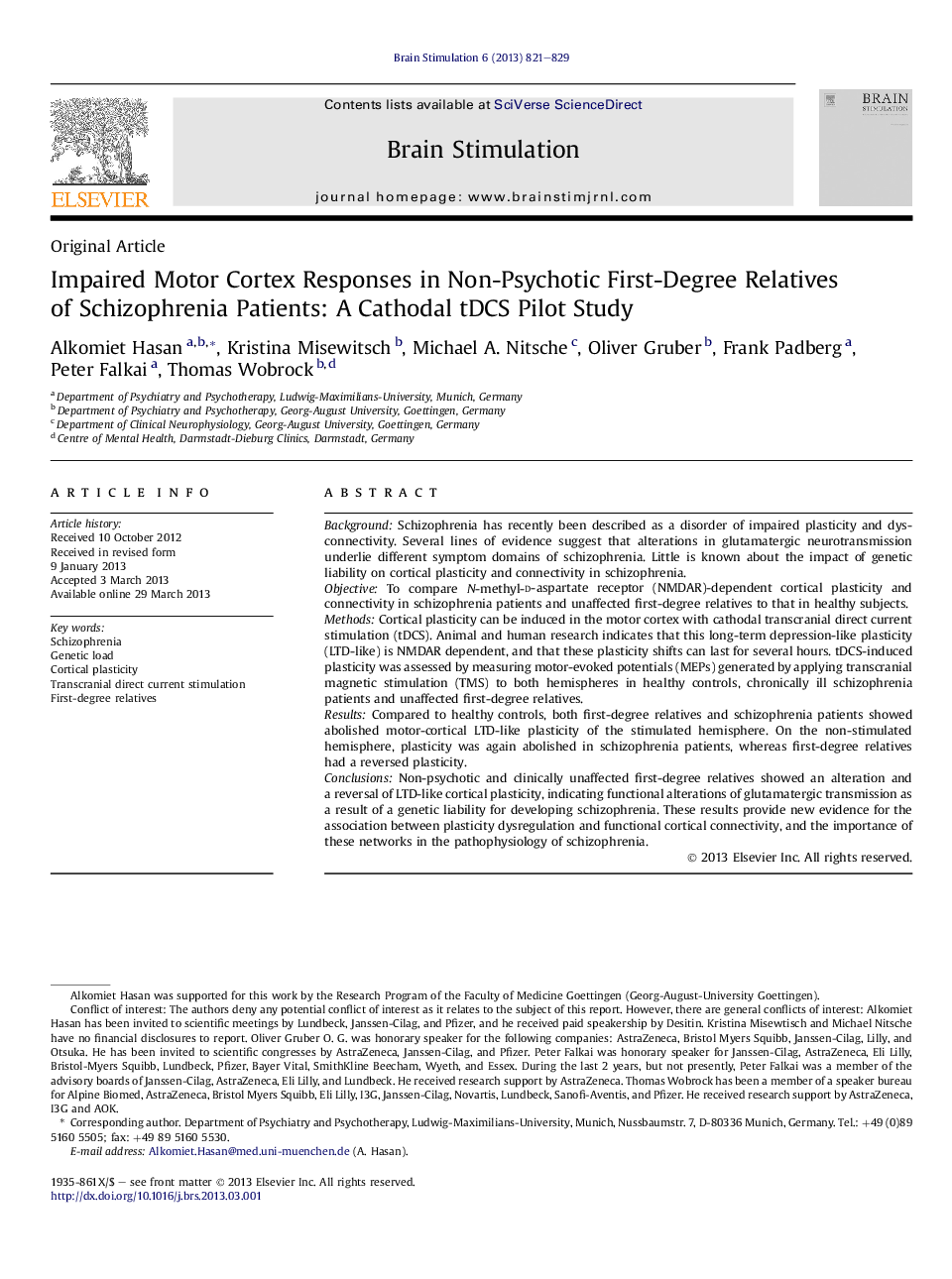| کد مقاله | کد نشریه | سال انتشار | مقاله انگلیسی | نسخه تمام متن |
|---|---|---|---|---|
| 3038819 | 1184673 | 2013 | 9 صفحه PDF | دانلود رایگان |

BackgroundSchizophrenia has recently been described as a disorder of impaired plasticity and dysconnectivity. Several lines of evidence suggest that alterations in glutamatergic neurotransmission underlie different symptom domains of schizophrenia. Little is known about the impact of genetic liability on cortical plasticity and connectivity in schizophrenia.ObjectiveTo compare N-methyl-d-aspartate receptor (NMDAR)-dependent cortical plasticity and connectivity in schizophrenia patients and unaffected first-degree relatives to that in healthy subjects.MethodsCortical plasticity can be induced in the motor cortex with cathodal transcranial direct current stimulation (tDCS). Animal and human research indicates that this long-term depression-like plasticity (LTD-like) is NMDAR dependent, and that these plasticity shifts can last for several hours. tDCS-induced plasticity was assessed by measuring motor-evoked potentials (MEPs) generated by applying transcranial magnetic stimulation (TMS) to both hemispheres in healthy controls, chronically ill schizophrenia patients and unaffected first-degree relatives.ResultsCompared to healthy controls, both first-degree relatives and schizophrenia patients showed abolished motor-cortical LTD-like plasticity of the stimulated hemisphere. On the non-stimulated hemisphere, plasticity was again abolished in schizophrenia patients, whereas first-degree relatives had a reversed plasticity.ConclusionsNon-psychotic and clinically unaffected first-degree relatives showed an alteration and a reversal of LTD-like cortical plasticity, indicating functional alterations of glutamatergic transmission as a result of a genetic liability for developing schizophrenia. These results provide new evidence for the association between plasticity dysregulation and functional cortical connectivity, and the importance of these networks in the pathophysiology of schizophrenia.
Journal: Brain Stimulation - Volume 6, Issue 5, September 2013, Pages 821–829